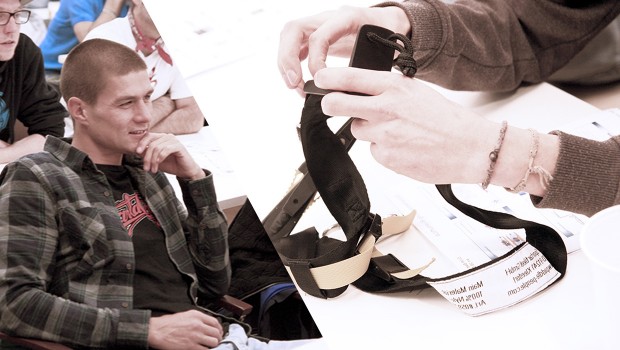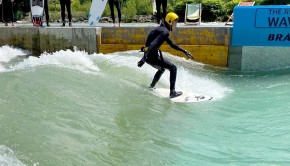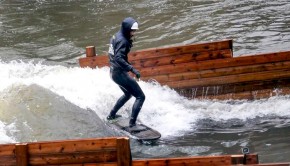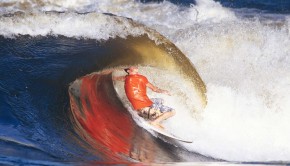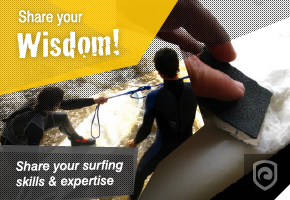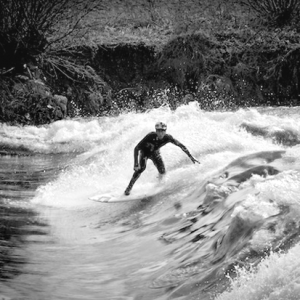Risks in River Surfing: Lessons Learned
As river surfing becomes more popular, we believe it’s our duty to share information about risks and safety in river surfing. Being a responsible river surfer has nothing to do with your level of surfing, it has to do with how responsible you behave on the river and with your ability to judge and cope with river hazards. The explosion of river surfing has triggered heated debates on safety issues in many communities. The Rivermates Surfclub has teamed up with water rescue experts and organised the world’s first river surfing safety workshop for river surfers from Austria, Germany and Switzerland. Here, we have summed up the key take aways for you.
Learn to Read the Water
Hans and Nicole from the Austrian Water Rescue Federation (ÖWR) started the workshop with pointing to an important skill: reading the water. Experience and knowledge can help experienced river surfers to discover and judge risks in the river only by looking at how the water flows, how it “behaves” so to say. Learning how to read the water can be crucial for when you decide to go in or not. Hans detailed the various “faces” and flows of water and how to interpret them.
 Workshop ParticipantsOver 35 river surfers joined the world’s first river surfing safety workshop in Bad Ischl.© Riverbreak Magazine
Workshop ParticipantsOver 35 river surfers joined the world’s first river surfing safety workshop in Bad Ischl.© Riverbreak Magazine Reading the WaterExperienced river surfers can judge risks only by reading the water.© Riverbreak Magazine
Reading the WaterExperienced river surfers can judge risks only by reading the water.© Riverbreak Magazine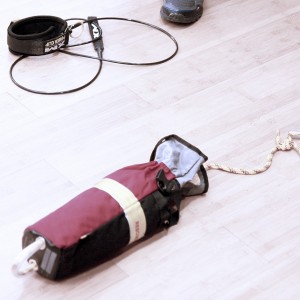 Throw Bags Are Vital for RescueProfessional water rescuers swear on them.© Riverbreak Magazine
Throw Bags Are Vital for RescueProfessional water rescuers swear on them.© Riverbreak Magazine
Avoid Getting Trapped by Your Surfboard
If there is one thing that you don’t want to see happening in the river it is getting trapped by your own surfboard. Here’s an example: if you stand still in the river at a flow of 2m/s, more than 40kg of water constantly keep pushing against your neck. While your neck provides only little windage to the water, the story changes with your surfboard. With its much larger windage the pressure can easily increase to 500kg or even reach up to 3.000kg (depending on the size of your board and the speed of the water). No man on earth could withstand this enormous amount of pressure. So what does that mean for us river surfers? If you fall off your board and for whatever reason are not able to get back up on it, always keep swimming behind your surfboard. Swimming in front of your surfboard increases the risk of getting trapped between your board and an obstacle (e.g. rock) in the river. So you better want to stay behind your surfboard when floating down the river.
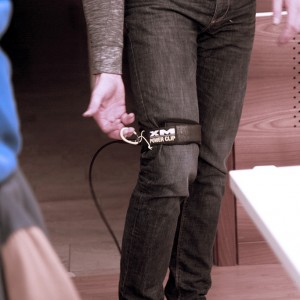 Risks of Wearing a LeashDemonstrating the risks associated with wearing a leash in river surfing.© Riverbreak Magazine
Risks of Wearing a LeashDemonstrating the risks associated with wearing a leash in river surfing.© Riverbreak Magazine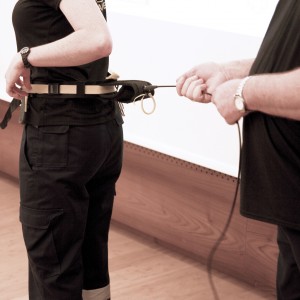 Quick Release WaistbeltOne way to escape when getting trapped by your leash.© Riverbreak Magazine
Quick Release WaistbeltOne way to escape when getting trapped by your leash.© Riverbreak Magazine Workshop AudienceMore than 35 river surfers joined the world’s first river surfing safety workshop in Bad Ischl.© Riverbreak Magazine
Workshop AudienceMore than 35 river surfers joined the world’s first river surfing safety workshop in Bad Ischl.© Riverbreak Magazine
Understand Different Types of Currents
There is a number of different types of currents (features) that river surfer should be familiar with. These features result from the interplay between the shape of the riverbed and the velocity of the water. In this workshop we’ve discussed pressure waves, pillows, boils, chutes, wave trains, channels, holes, eddies, eddy-lines, backwash, outwash, whirlpools and curlers. A lot of these terms have been developed and used by kayakers since forever — so you might check with local kayakers to find out which of these are relevant at your spot and what they mean for your safety. At the very least you should make yourself familiar with the dangers of a recirculating current and how to escape if you should ever find yourself in such a scary situation.
 Features in RiversDetailing different features and associated hazards in whitewater.© Riverbreak Magazine
Features in RiversDetailing different features and associated hazards in whitewater.© Riverbreak Magazine Workshop AudienceRiver surfers from Austria, Germany and Switzerland learning about river hazards.© Riverbreak Magazine
Workshop AudienceRiver surfers from Austria, Germany and Switzerland learning about river hazards.© Riverbreak Magazine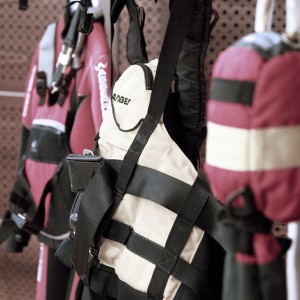 Safety GearShowcasing some the standard equipment used by water rescuers.© Riverbreak Magazine
Safety GearShowcasing some the standard equipment used by water rescuers.© Riverbreak Magazine
Deal with Hazardous Objects in the River
Objects in rivers are distinguished between natural and man-made. Rocks are probably the most common natural objects that river surfers have to deal with. Here, one particular threat are undercut rocks, that you want to avoid in any case as you can get trapped underneath them underwater. Rocks that are undercut on the upstream side are particularly dangerous. Once pinned against the rock underwater, there is hardly any chance to escape — this situation has already resulted in numerous whitewater deaths. Cataracts, falls, drops, sieves, trainers and sifts are among other natural dangers that river surfers need to be aware of when navigating in the water. Man-made objects that can pose threats to river surfers are stepped weirs, lowhead dams, compound weirs, concrete slope weirs, weir pools and other types of dams and weirs. What is particularly dangerous for river surfers are bridge pylons, poles and iron installations in rivers. If your leash wraps around one of these objects you’ll find yourself in real trouble. Read this story on a near-drowning accident involving a river surfer who got trapped under water on one side of a bridge pylon while his board got trapped on the other side of the pillar.
 Natural vs. Man-Made ObjectsDetailing risks of natural and artificial objects in rivers.© Riverbreak Magazine
Natural vs. Man-Made ObjectsDetailing risks of natural and artificial objects in rivers.© Riverbreak Magazine Hands-on PracticeSafety equipment was passed through the participants to get familiar with their risks and benefits.© Riverbreak Magazine
Hands-on PracticeSafety equipment was passed through the participants to get familiar with their risks and benefits.© Riverbreak Magazine River Surfing HelmetNicole explains the most important features of a helmet that would do for river surfers.© Riverbreak Magazine
River Surfing HelmetNicole explains the most important features of a helmet that would do for river surfers.© Riverbreak Magazine
Use Safety Gear
There is still no specific river surfing safety gear on the market. Yet, there are safety devices that river surfers can (and should) borrow from other sports that face similar risks in whitewater. Though it depends on the spots, context and individual preferences there are certain devices that river surfers can choose from to make surfing in rivers safer: helmets, PFDs, knifes, throw bags, wetsuits and whistles. Even if the debate on wearing leashes and PFDs and other devices has become hefty, there is one thing that pretty much every river surfer seems to agrees on: the importance of wearing a helmet.
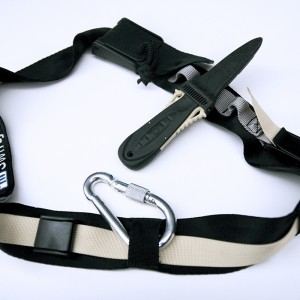 Safety BeltThis quick release safety belt allows river surfers to attach anything that might be useful to increase safety in whitewater.© Riverbreak Magazine
Safety BeltThis quick release safety belt allows river surfers to attach anything that might be useful to increase safety in whitewater.© Riverbreak Magazine Restube DeviceMax demonstrates how Restube could be used in river surfing.© Riverbreak Magazine
Restube DeviceMax demonstrates how Restube could be used in river surfing.© Riverbreak Magazine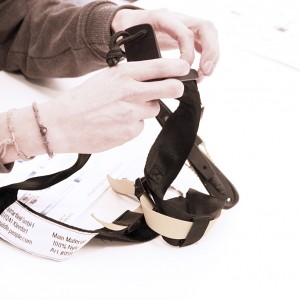 Quick Release MechanismThis waistbelt hast two quick release options.© Riverbreak Magazine
Quick Release MechanismThis waistbelt hast two quick release options.© Riverbreak Magazine
Key Take Aways for River Surfers
There are no universally accepted safety rules in river surfing and there will probably never be any. Yet, there are at least 4 tried and tested recommendations that could make river surfing safer:
- Never surf alone
- Always wear a helmet
- Always swim behind your surfboard
- Make yourself familiar with leash-related risks
More Impressions from the Workshop
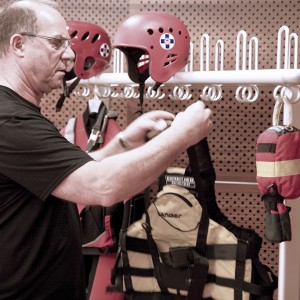 Life JacketsSafety workshop on river hazards and how to minimise risk in river surfing.© Riverbreak Magazine
Life JacketsSafety workshop on river hazards and how to minimise risk in river surfing.© Riverbreak Magazine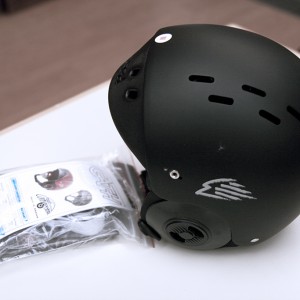 River Surfing HelmetSafety workshop on river hazards and how to minimise risk in river surfing.© Riverbreak Magazine
River Surfing HelmetSafety workshop on river hazards and how to minimise risk in river surfing.© Riverbreak Magazine Riverbreak Coverage of the WorkshopCovering the safety workshop on river hazards and how to minimise risk in river surfing.© Riverbreak Magazine
Riverbreak Coverage of the WorkshopCovering the safety workshop on river hazards and how to minimise risk in river surfing.© Riverbreak Magazine Participants in Bad IschlSafety workshop on river hazards and how to minimise risk in river surfing.© Riverbreak Magazine
Participants in Bad IschlSafety workshop on river hazards and how to minimise risk in river surfing.© Riverbreak Magazine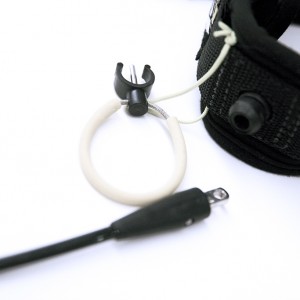 Quick Release LeashA quick release leash does not seem to be the ideal solution though.© Riverbreak Magazine
Quick Release LeashA quick release leash does not seem to be the ideal solution though.© Riverbreak Magazine Max Enjoying the WorkshopSafety workshop on river hazards and how to minimise risk in river surfing.© Riverbreak Magazine
Max Enjoying the WorkshopSafety workshop on river hazards and how to minimise risk in river surfing.© Riverbreak Magazine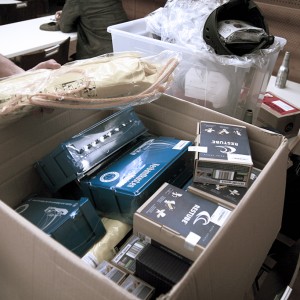 Nu.Art Surfstuff Safety GearSafety workshop on river hazards and how to minimise risk in river surfing.© Riverbreak Magazine
Nu.Art Surfstuff Safety GearSafety workshop on river hazards and how to minimise risk in river surfing.© Riverbreak Magazine Getting Familiar With Safety DevicesSafety workshop on river hazards and how to minimise risk in river surfing.© Riverbreak Magazine
Getting Familiar With Safety DevicesSafety workshop on river hazards and how to minimise risk in river surfing.© Riverbreak Magazine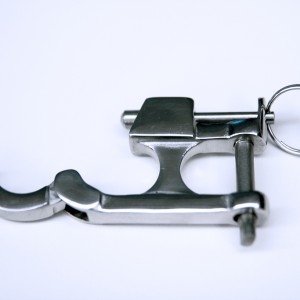 Snap ShackleCan be unfastened under load.© Riverbreak Magazine
Snap ShackleCan be unfastened under load.© Riverbreak Magazine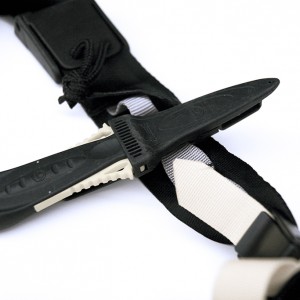 Knife Attached to BeltCan be helpful when a surfer gets entangled in a rope.© Riverbreak Magazine
Knife Attached to BeltCan be helpful when a surfer gets entangled in a rope.© Riverbreak Magazine River-Surfing-Safety-LectureSafety workshop on river hazards and how to minimise risk in river surfing.© Workshop Participants
River-Surfing-Safety-LectureSafety workshop on river hazards and how to minimise risk in river surfing.© Workshop Participants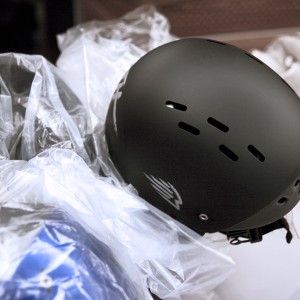 Helmets for River SurfersSafety workshop on river hazards and how to minimise risk in river surfing.© Riverbreak Magazine
Helmets for River SurfersSafety workshop on river hazards and how to minimise risk in river surfing.© Riverbreak Magazine Video SessionSafety workshop on river hazards and how to minimise risk in river surfing.© Riverbreak Magazine
Video SessionSafety workshop on river hazards and how to minimise risk in river surfing.© Riverbreak Magazine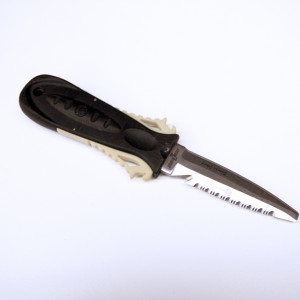 Knife to Cut Thicker RopesSafety workshop on river hazards and how to minimise risk in river surfing.© Riverbreak Magazine
Knife to Cut Thicker RopesSafety workshop on river hazards and how to minimise risk in river surfing.© Riverbreak Magazine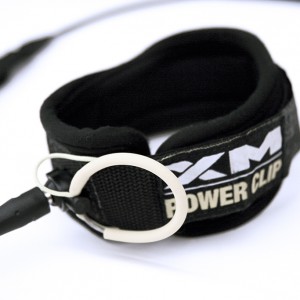 XM Power Clip Easy ReleaseDiscussing risks and benefits of quick release leashes.© Riverbreak Magazine
XM Power Clip Easy ReleaseDiscussing risks and benefits of quick release leashes.© Riverbreak Magazine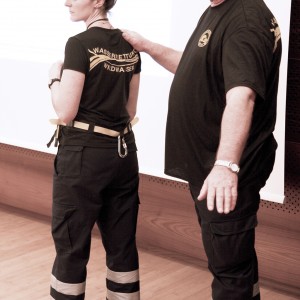 Safety Belt DemonstrationSafety workshop on river hazards and how to minimise risk in river surfing.© Riverbreak Magazine
Safety Belt DemonstrationSafety workshop on river hazards and how to minimise risk in river surfing.© Riverbreak Magazine Riverbreak CoverageSafety workshop on river hazards and how to minimise risk in river surfing.© Riverbreak Magazine
Riverbreak CoverageSafety workshop on river hazards and how to minimise risk in river surfing.© Riverbreak Magazine Extensive Discussion on Safety IssuesSafety workshop on river hazards and how to minimise risk in river surfing.© Riverbreak Magazine
Extensive Discussion on Safety IssuesSafety workshop on river hazards and how to minimise risk in river surfing.© Riverbreak Magazine

